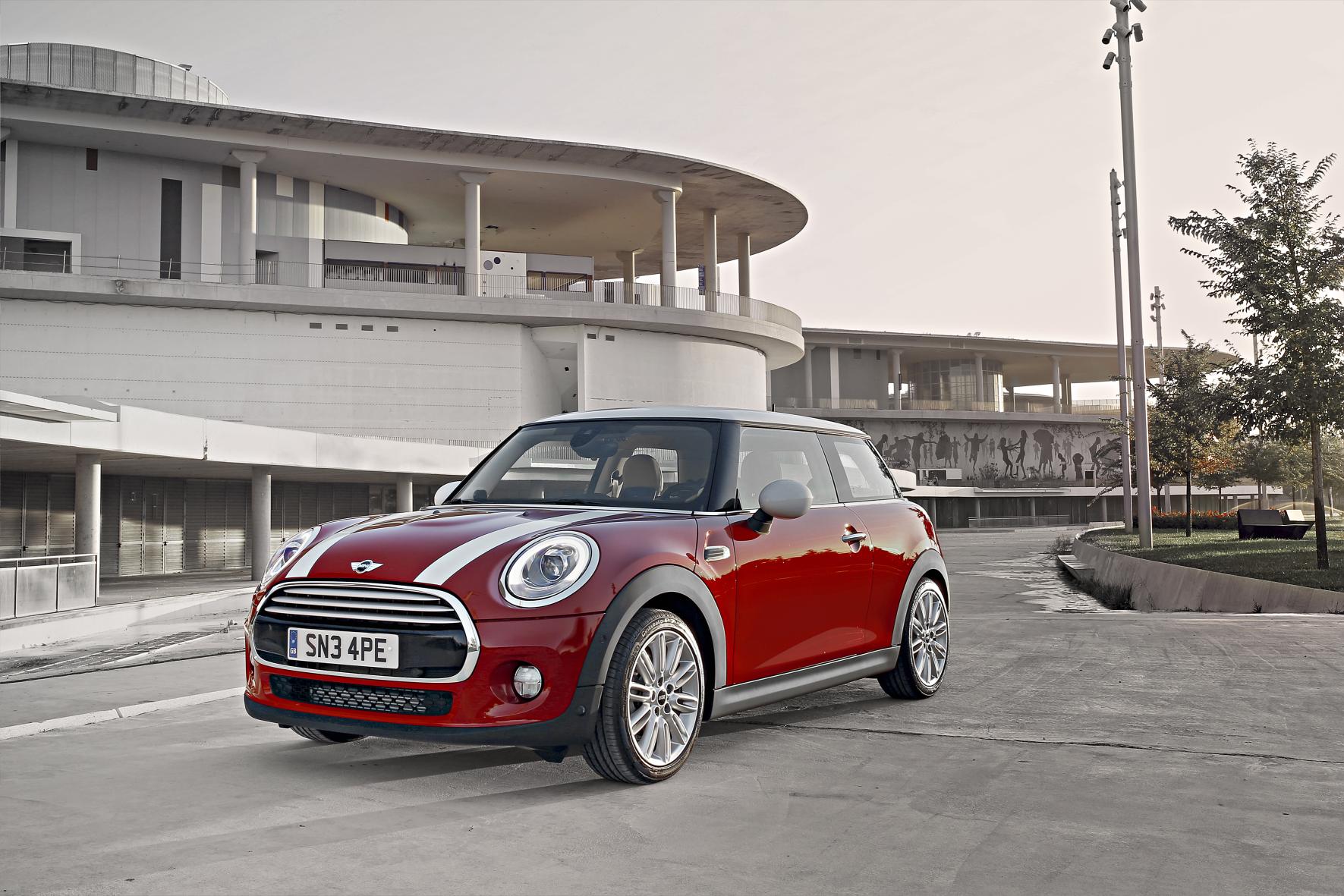First drive review: Mini Cooper hatchback (2014)
The new Mini’s growth spurt means it offers a more comfortable ride and more space than predecessors, but it’s not as much fun as it used to be

SEEING THE new, third generation of the BMW Mini is like catching up with a teenage niece or nephew. “My, haven’t you grown?” is the first thing that springs to mind because, like any adolescent, the Mini has been growing at a remarkable rate.
Long gone are the days of fitting two Minis in a parking space. The latest Cooper hatchback is more than 12ft long — not all that far off a VW Golf, for heaven’s sake — and will fill a parking spot outside Sainsbury’s with not much room to spare. For a lot of fans of the cheeky small car, this could be a growth spurt too far. Especially if it means the Mini ends up driving like any other car on the road. So does it?
Despite the company’s claims that “virtually all variants of the new Mini are lighter than their respective previous models”, this is not strictly true. Late in the previous model’s life, Mini added weight to versions including the Cooper and Cooper S, which had the effect of making them heavier than the new generation. So we can take Mini’s claims that bigger doesn’t mean heavier with a pinch of salt.
The second bit of bad news is that when the Mini arrives in showrooms in March it will be available only as a three-door hatchback. The Clubman “estate”, now with five doors not four — having lost the single rear “suicide door” — won’t arrive before the end of the year.
That said, the three-door hatchback is notably more spacious than before, especially in the back, where it is now merely cramped rather than crippling. (Owners refer to the effects of this as the “Mini limp”.)
The three-door hatchback is notably more spacious than before, especially in the back, where it is now merely cramped rather than crippling. (Owners refer to the effects of this as the “Mini limp”.)
The dustbin-lid dial that housed the speedometer is still there but is now used for navigation, entertainment and communication displays, allowing you to tweet from the car, browse Facebook and listen to internet radio. The speedo has migrated to above the steering column, where it can actually be read.
Some versions of the hatchback — the Mini One and the Cooper — will be powered by a new generation of engines: 1.2 and 1.5-litre turbo petrol engines and two 1.5-litre diesel motors, all with just three cylinders. Only the petrol-powered Cooper S gets four cylinders, complete with a turbo and a 2-litre capacity.
I first took out a Cooper S fully loaded with extras, including an automatic gearbox and adaptive suspension damping. The engine is quieter and the ride improved. It’s still firm but has lost the skittishness and no longer jumps about over bumps and potholes.
The Cooper S is also a fraction quicker than the car it replaces, but for all it has gained I can’t help feeling the new model has lost something — the sense that car and driver are in it together, sharing an adventure.
What hope, then, for the standard Cooper, with plain manual gears, conventional suspension and a mere 136bhp from its three-cylinder motor against the 192bhp of the S?

All the hope in the world, it turns out. Turn the steering wheel and it goes exactly where you want it to, perhaps not quite as sharply as before but enough to reassure you that nothing has been lost in the handling. What’s more, the three-cylinder engine sounds so good I found myself wishing it were louder.
Nor will you regret saving the money and staying with the standard manual gearbox. It’s entirely new and has such a light, precise and quick change, you’ll be flicking through the gears just because you can. And when you change down, the engine management computer blips the throttle to match perfectly the required revs of the incoming gear, so your passengers will think you’re a racing driver. Maybe.
Thanks to its softer springs, the Cooper now glides over undulations. On a racetrack this softness would be a disadvantage, but out here in the real world it transforms the car for the better.
Since the first BMW Mini went on sale 13 years ago, the hatchback has always been the best version and the Cooper the best variant. That’s still the case with the latest range — and it’s £3,350 cheaper than the Cooper S.
Bigger isn’t always better, however, as the original Mini taught us back in 1959. If you are a traditionalist, given to lamenting the ever-increasing size of the car, this version is further from the ideal than ever before. But if you are looking for an enjoyable, more conventional family runabout, this Mini is the best in its class.
Verdict ★★★★☆
Easier to live with than the Mk 2 Mini Hatch and better to drive as an everyday car
Specification
- Release date:
- March 2014
- Price:
- £15,300
- Engine:
- 1499cc, 3 cylinders
- Power:
- 136bhp @ 4500rpm
- Torque:
- 162 lb ft @ 1250rpm
- Transmission:
- 6-speed manual
- Acceleration:
- 0-62mph: 7.8sec
- Top speed:
- 130mph
- Fuel:
- 62.8mpg
- CO2:
- 105g/km
- Road tax band:
- B (free for first year, £20 thereafter)
- Dimensions:
- L 3821mm, W 1727mm, H 1414mm
2014 Mini Cooper rivals
Audi A1 1.4 TFSI Sport, £16,365 (price correct at time of publishing)
For Impressive presence for its size; great interior quality Against Costs £1,000 more than the Mini; less economical
Search for and buy a used Audi A1 on driving.co.uk
Citroën DS3 DStyle 120 VTi, £15,375 (price correct at time of publishing)
For Attractive; lots of options Against So-so to drive
Search for and buy a used Citroën DS3 on driving.co.uk




